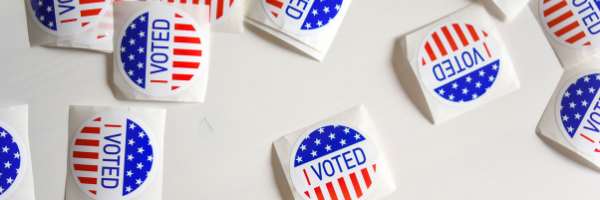Ten states have amended their voter ID laws so far in 2025. One state, West Virginia, moved from requiring non-photo identification to vote to requiring photo identification.
Across the U.S., 36 states require voters to present identification to vote at the polls on Election Day. Of those states, 24 require voters to present photo identification, while the other 12 states accept identification that does not contain a photograph. The remaining 14 states do not require voters to present identification to vote at the polls on Election Day, in most cases.
Valid forms of identification differ by state. Commonly accepted forms of ID include driver's licenses, state-issued identification cards, and military identification cards.
Some states requiring voters to provide identification may have exceptions allowing some people to cast a ballot without providing an ID. For instance, 15 states allow some or all voters to sign an affidavit attesting to their identity at the polls instead of presenting identification. Seven states allow another voter or an election official to vouch for the person’s identity in at least some cases. Four states allow voters who live and vote in state-licensed nursing homes or residential care facilities to vote without showing identification.
Three states — Alabama, New Hampshire, and Kentucky — require voters to provide a copy of their identification when requesting an absentee/mail-in ballot. Two states, Arkansas and North Carolina, require voters to provide a copy of their identification when returning an absentee/mail-in ballot.
Across the country, 10 states passed 10 bills related to voter ID for in-person voting or absentee/mail-in voting during 2025 legislative sessions. Some noteworthy laws states adopted this year include:
- Colorado SB 1 expanded the list of eligible forms of non-photo identification to include identification and cards issued by the Bureau of Indian Affairs, the Indian Health Service, or any other federal agency that includes an address in the state. Gov. Jared Polis (D) signed the bill on May 12.
- Georgia HB 296 required that driver’s licenses used as identification for voting purposes be in a physical format and issued by the Georgia Department of Driver Services. Gov. Brian Kemp (R) signed the bill on May 14.
- Montana SB 276 expanded the list of eligible forms of identification to include a student ID card issued by a school in the Montana university system or a Montana school that is a member of the National Association of Intercollegiate Athletics. Gov. Greg Gianforte (R) signed the bill on May 5.
- New Hampshire SB 287 required voters to include a copy of their identification or a notarized signature when requesting an absentee ballot by mail or to present their ID to an election official when requesting an absentee ballot in person. Gov. Kelly Ayotte (R) signed the bill on August 1.
- Utah HB 300 required voters to provide the last four digits of their driver's license, ID card, or Social Security number when returning a mail-in ballot, starting on Nov. 5, 2025. Until Dec. 31, 2028, election officials will attempt to match the voter's signature on the envelope affidavit to the signature on file for voters who do not provide an identification number. Starting on Jan. 1, 2029, voters must provide the last four digits of an identification number or include a copy of an acceptable ID when returning their mail ballot. Gov. Spencer Cox (R) signed the bill on March 26.
- West Virginia HB 3016 required photo identification to vote, though driver’s licenses issued without a photograph remain valid for voting. The bill removed documents from the list of eligible forms of identification and allowed voters 65 years of age and older to use an expired ID if the document was valid when they turned 65. Gov. Patrick Morrisey (R) signed the bill on April 30.
In addition, Wisconsin voters in April approved a constitutional amendment adding language requiring a photo ID to vote in the Wisconsin Constitution. The amendment allows the state legislature to define what qualifies as a valid photo ID and provide exceptions to the requirement. Wisconsin passed a statutory voter ID law in 2011.
Five states adopted five laws related to voter ID in 2024. Thirteen states adopted 14 such laws in 2023. Nine states adopted 10 such laws in 2022.
The federal Help America Vote Act requires that individuals in all 50 states who register to vote by mail and who have not voted previously in a federal election in their state must provide either their driver's license or a paycheck, bank statement, current utility bill, or government document showing their name and address at their polling place or with their absentee/mail-in ballot. This does not apply if a voter submitted a copy of their ID or identification number when registering to vote.
To learn more about voter ID legislation, check out Ballotpedia’s Election Administration Legislation Tracker.
Click here to learn about voter ID laws in each state.


